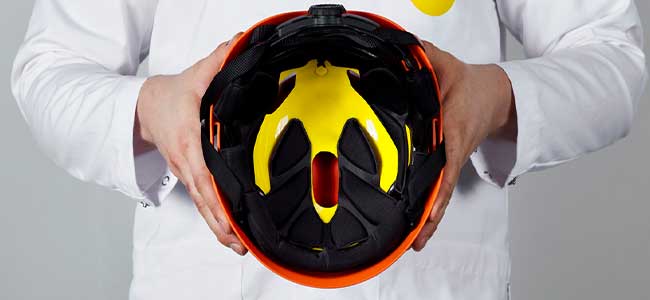
What Is Rotational Motion and Its Role in Concussions?
Understanding rotational motion can better protect workers from head injuries and long-term risks.
- By Sofia Hedenstierna
- Jun 01, 2023
Although we’re living in the twenty-first century, there are still many dangers in our workplaces. For certain industries, such as the construction, manufacturing and industrial industries, the risks on the job are greater than others. Due to the nature of the work, there are numerous activities that expose these workers to hazards.
Worker safety is at a critical juncture: Between 2003 and 2010, a total of 2,210 construction workers died of a traumatic brain injury (TBI). These deaths represented 25 percent of all construction fatalities, an industry that sees higher numbers of both fatal and non-fatal traumatic brain injuries than any others.
What’s Causing Traumatic Brain Injuries?
In the construction industry, the leading causes of traumatic brain injuries are coming into contact with objects and equipment, and for fatal injuries are slips, trips and falls. One reason such accidents can lead to TBIs is that when an object glances the head or the head impacts the ground in connection with a fall, this typically occurs at an angle, which may expose the head to rotational motion.
Understanding Rotational Motion
Rotational motion can be described as a combination of rotational forces (angular acceleration) and rotational energy (angular velocity), which may result from oblique impacts to the head. When rotational motion is transferred to the brain, it begins to rotate. If the rotation is large enough, this can lead to shearing of the brain’s axons, the cable transmitters of neurons.
Both linear and rotational motion can occur and cause injury during most impacts. Yet different kinds of injuries can potentially be caused by these different types of motions. For example, linear motions can primarily lead to focal injuries, including contusions and fractions. Rotational motion, on the other hand, may cause diffuse injuries, such as subdural hematoma and diffuse axonal injury. Furthermore, experiments and numerical computer simulations have demonstrated that the brain is more sensitive to rotational motion than linear motion in regard to concussions. Essentially, this means concussions caused by rotational motion occur at lower levels of energy than in cases involving linear motion. In other words, even impacts that may seem to be light can lead to concussions when rotation is a factor.
This article originally appeared in the June 1, 2023 issue of Occupational Health & Safety.